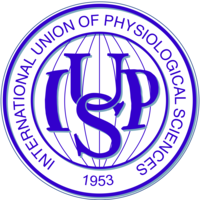Research Articles
A digital twin in the form of a whole-body physiologically based pharmacokinetic (PBPK) model of glimepiride was developed to systematically evaluate the influence of patient-specific factors on drug disposition. Based on curated data from 20 clinical studies, the model simulates the absorption, distribution, metabolism and excretion (ADME) of the drug while accounting for variability in renal and hepatic function, CYP2C9 genetic variants and bodyweight. The model is implemented in the Systems Biology Markup Language (SBML) standard and simulations are perormed using scripts that utilise the libRoadRunner library to run simulations and generate results. Here, we demonstrate the computational reproducibility of the key findings from the primary publication, thereby verifying the consistency and reproducibility of the model implementation with the published results.
A digital twin in the form of a whole-body physiologically based pharmacokinetic (PBPK) model of glimepiride was developed to systematically evaluate the influence of patient-specific factors on drug disposition. Based on curated data from 20 clinical studies, the model simulates the absorption, distribution, metabolism and excretion (ADME) of the drug while accounting for variability in renal and hepatic function, CYP2C9 genetic variants and bodyweight. The model is implemented in the Systems Biology Markup Language (SBML) standard and simulations are perormed using scripts that utilise the libRoadRunner library to run simulations and generate results. Here, we demonstrate the computational reproducibility of the key findings from the primary publication, thereby verifying the consistency and reproducibility of the model implementation with the published results.
This work presents an energy-based modelling framework and presented two exemplar bond graph templates for solute carrier (SLC) transporter families, facilitated diffusion with SLC2A2 (GLUT2) and sodium-glucose cotransport with SLC5A1 (SGLT1).
This work presents an energy-based modelling framework and presented two exemplar bond graph templates for solute carrier (SLC) transporter families, facilitated diffusion with SLC2A2 (GLUT2) and sodium-glucose cotransport with SLC5A1 (SGLT1).
This work studies neural regulation, by simulating the membrane potential oscillations due to phasic slow wave activity and resulting active tension generation within distal gastric interstitial cells of Cajal and smooth muscle cells.
This work studies neural regulation, by simulating the membrane potential oscillations due to phasic slow wave activity and resulting active tension generation within distal gastric interstitial cells of Cajal and smooth muscle cells.
This paper presents a reproduced computational model of lymphatic collecting vessels. The model was originally introduced by Bertram et al. (2011), and comprises a series of contractile segments, known as lymphangions, interconnected by secondary lymphatic valves. The model focused on elucidating the pumping behavior of contracting lymphangions and deriving pump-characteristic curves, by incorporating pressure-dependent valve resistance, passive elasticity, and active contraction terms in multiple lymphangions connected in series.
This paper presents a reproduced computational model of lymphatic collecting vessels. The model was originally introduced by Bertram et al. (2011), and comprises a series of contractile segments, known as lymphangions, interconnected by secondary lymphatic valves. The model focused on elucidating the pumping behavior of contracting lymphangions and deriving pump-characteristic curves, by incorporating pressure-dependent valve resistance, passive elasticity, and active contraction terms in multiple lymphangions connected in series.
The PBPK model of FcRn-mediated recycling of large molecules was developed and studied by deWitte et al. (2023) to characterize and predict Immunoglobulin G (IgG) disposition in plasma and tissues. This study investigated the large-molecule model in PK-Sim and its applicability to molecules with FcRn binding affinity in plasma.
The PBPK model of FcRn-mediated recycling of large molecules was developed and studied by deWitte et al. (2023) to characterize and predict Immunoglobulin G (IgG) disposition in plasma and tissues. This study investigated the large-molecule model in PK-Sim and its applicability to molecules with FcRn binding affinity in plasma.
An effort at reducing the Tong et al. (2011) model into a smaller number of equations for computational efficiency – the 'reduced' Tong model – aims at reproducing the overall behaviour without excessive detail.
An effort at reducing the Tong et al. (2011) model into a smaller number of equations for computational efficiency – the 'reduced' Tong model – aims at reproducing the overall behaviour without excessive detail.
We describe here our implementation of a renal epithelial model as published in Noroozbabaee et al. (2022). The flexible and modular model we presented in Noroozbabaee et al. (2022) can be adapted to specific configurations of epithelial transport.
We describe here our implementation of a renal epithelial model as published in Noroozbabaee et al. (2022). The flexible and modular model we presented in Noroozbabaee et al. (2022) can be adapted to specific configurations of epithelial transport.
The system of equations and figures presented in Imtiaz et al. (2002) are verified and reproduced in the current curation paper.
The system of equations and figures presented in Imtiaz et al. (2002) are verified and reproduced in the current curation paper.
Afshar et al. (2021) generated a computational model of non-isotonic glucose uptake by small intestinal epithelial cells. The model incorporates apical uptake via SGLT1 and GLUT2, basolateral efflux into the blood via GLUT2 and cellular volume changes in response to non-isotonic conditions.
Afshar et al. (2021) generated a computational model of non-isotonic glucose uptake by small intestinal epithelial cells. The model incorporates apical uptake via SGLT1 and GLUT2, basolateral efflux into the blood via GLUT2 and cellular volume changes in response to non-isotonic conditions.
The mechanistic model of neurovascular coupling was developed and studied by Sten et al. (2020). This model describes and predicts the arteriolar dilation data of mice under various stimulations while anaesthetised and awake. We reconstructed the model in CellML, using a modular approach for each neuronal pathway, and successfully reproduced the original experiments.
The mechanistic model of neurovascular coupling was developed and studied by Sten et al. (2020). This model describes and predicts the arteriolar dilation data of mice under various stimulations while anaesthetised and awake. We reconstructed the model in CellML, using a modular approach for each neuronal pathway, and successfully reproduced the original experiments.
Lees-Green et al. (2014) describes a biophysical computational model of anoctamin 1 calcium-activated chloride channels. The system of equations and simulation results are verified and reproduced.
Lees-Green et al. (2014) describes a biophysical computational model of anoctamin 1 calcium-activated chloride channels. The system of equations and simulation results are verified and reproduced.
The muscle spindle model presented in Maltenfort & Burke (2003) calculates muscle spindle primary afferent feedback depending on the muscle fibre stretch and fusimotor drive.
The muscle spindle model presented in Maltenfort & Burke (2003) calculates muscle spindle primary afferent feedback depending on the muscle fibre stretch and fusimotor drive.
The model incorporates processes of intracellular Ca²⁺ concentration control, myosin light chain (MLC) phosphorylation and stress production.
The model incorporates processes of intracellular Ca²⁺ concentration control, myosin light chain (MLC) phosphorylation and stress production.
The system of equations and figures presented in Saucerman et al., 2003 are verified and reproduced in this paper’s curation effort.
The system of equations and figures presented in Saucerman et al., 2003 are verified and reproduced in this paper’s curation effort.
The Poh et al. (2012) paper describes the first biophysically based computational model of human jejunal smooth muscle cell (hJSMC) electrophysiology. The ionic currents are described by either a traditional Hodgkin-Huxley (HH) formalism or a deterministic multi-state Markov (MM) formalism.
The Poh et al. (2012) paper describes the first biophysically based computational model of human jejunal smooth muscle cell (hJSMC) electrophysiology. The ionic currents are described by either a traditional Hodgkin-Huxley (HH) formalism or a deterministic multi-state Markov (MM) formalism.
The sinoatrial node (SAN) is the natural pacemaker of the mammalian heart. It has been the subject of several mathematical studies, aimed at reproducing its electrical response under normal sinus rhythms, as well as under various conditions.
The sinoatrial node (SAN) is the natural pacemaker of the mammalian heart. It has been the subject of several mathematical studies, aimed at reproducing its electrical response under normal sinus rhythms, as well as under various conditions.
An implemented model of glucose absorption in the enterocyte, as previously published by Afshar et al. (2019).
An implemented model of glucose absorption in the enterocyte, as previously published by Afshar et al. (2019).
A multi-scale model computational model of myocardial energetics—oxidative ATP synthesis, ATP hydrolysis, and phosphate metabolite kinetics—and myocardial mechanics used to analyze data from a rat model of cardiac decompensation and failure.
A multi-scale model computational model of myocardial energetics—oxidative ATP synthesis, ATP hydrolysis, and phosphate metabolite kinetics—and myocardial mechanics used to analyze data from a rat model of cardiac decompensation and failure.
We describe a major development of the Shorten et al. (2007) model of skeletal muscle electrophysiology, biochemistry and mechanics.
We describe a major development of the Shorten et al. (2007) model of skeletal muscle electrophysiology, biochemistry and mechanics.
We reproduce muscle cramp, as well as its prevention and reversal, by investigating muscle contraction and cramp, in which calcium regulatory networks are involved, using the extended model in comparison with the original model.
We reproduce muscle cramp, as well as its prevention and reversal, by investigating muscle contraction and cramp, in which calcium regulatory networks are involved, using the extended model in comparison with the original model.
The classic Boron & De Weer (1976) paper provided the first evidence of active regulation of pH in cells by an energy-dependent acid-base transporter. This Physiome paper seeks to make that model, and the experimental conditions under which it was developed, available in a reproducible and well-documented form, along with a software implementation that makes the model easy to use and understand.
The classic Boron & De Weer (1976) paper provided the first evidence of active regulation of pH in cells by an energy-dependent acid-base transporter. This Physiome paper seeks to make that model, and the experimental conditions under which it was developed, available in a reproducible and well-documented form, along with a software implementation that makes the model easy to use and understand.
The Na⁺/K⁺ ATPase is an essential component of cardiac electrophysiology, maintaining physiological Na⁺ and K⁺ concentrations over successive heart beats. Terkildsen et al. (2007) developed a model of the ventricular myocyte Na⁺/K⁺ ATPase to study extracellular potassium accumulation during ischaemia, demonstrating the ability to recapitulate a wide range of experimental data, but unfortunately there was no archived code associated with the original manuscript.
The Na⁺/K⁺ ATPase is an essential component of cardiac electrophysiology, maintaining physiological Na⁺ and K⁺ concentrations over successive heart beats. Terkildsen et al. (2007) developed a model of the ventricular myocyte Na⁺/K⁺ ATPase to study extracellular potassium accumulation during ischaemia, demonstrating the ability to recapitulate a wide range of experimental data, but unfortunately there was no archived code associated with the original manuscript.
The primary paper Safaei et al. (2018) proposed an anatomically detailed model of the human cerebral circulation that runs faster than real-time on a desktop computer and is designed for use in clinical settings when the speed of response is important.
The primary paper Safaei et al. (2018) proposed an anatomically detailed model of the human cerebral circulation that runs faster than real-time on a desktop computer and is designed for use in clinical settings when the speed of response is important.





